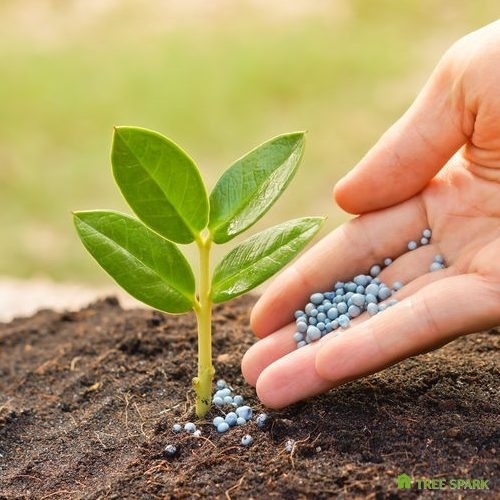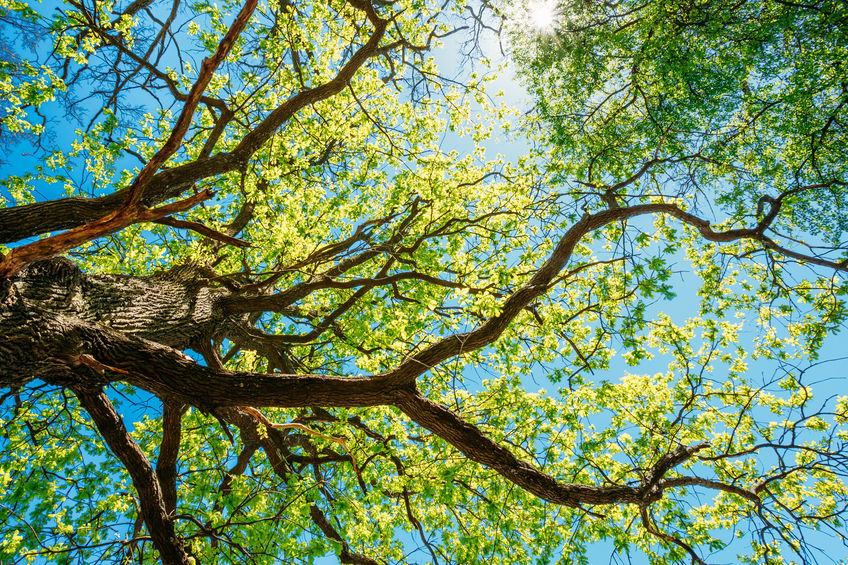
Encourage Tree Growth
When you’re taking care of your plants you may have wondered what to do to improve their growth and overall health. When you’re thinking about applying tree fertilizer what’s considered the ideal time for the best results of growth is to do it after the first hard freeze in October and before the soil freezes in December. The reasoning behind this is that the soil temperature during this time period is warm enough for the roots to take minerals and store it for growth in the following spring. If you attempt to fertilize trees during the winter time than it’ll either runoff or be lost to leaching. If you would like to do it at another time the second best option is to apply tree fertilizer during the months of March, April or early May depending on where you live. Ultimately tree care fertilizer application will depend on your plant and the area where you live. You could technically apply tree fertilizer whenever it’s required any time from late September to early May. What’s more, if you apply it mid-July, although it may stimulate growth it’ll run the risk of being damaged by an early freeze. As far as age factors in conjunction with trees and fertilizer, if you’ve planted a new tree you should only fertilize them lightly until they’ve become more established and this usually starts after they’ve completed their first growing season. Young trees that are growing fast should be fertilized yearly in order to promote fast growth. Finally, if your trees are mature than they’ll only need tree fertilizer every 2-3 years in order to maintain strength and exceptional foliage color.
Do trees need food?
Trees create their own food through the process of photosynthesis yet they can get a little boost in growth through natural fertilizers which increase the nutrient count that they would naturally produce in lower numbers.
Tree Food Options
- Nitrogen (N)
- Phosphorus (P)
- Potassium (K)
What is the best fertilizer for trees and shrubs?
The best tree fertilizer has a nitrogen content between 12%-30% with potassium and phosphorus at 3%-12%. How you apply the tree fertilizer will depend on the area of root occupation, roots that are spread beyond the branches will need to have the area of application one and a half times the diameter of the branches spread. Be sure to have the tree fertilizer spread evenly across the soil’s surface with the amount of nitrogen applied 3 pounds per 1,000 square feet.

Can I use lawn fertilizer for trees?
It’s not recommended to use fertilizers that are used on lawns as they’re often formulated to contain herbicides.
Are fertilizer spikes effective?
Fertilizer spikes are effective and convenient yet the drawback is that they aren’t as cost friendly as granulated or liquid fertilizers. What’s more, getting the dosage right can be difficult as each spike will contain a predetermined amount of nutrients. In the case of tree fertilizer spikes vs granular, it’s important to take into mind that although fertilizer spikes are easier to handle and store than granular fertilizer they are more labor intensive in application to trees than granular alternatives. With tree fertilizer liquid you can simply spray them in the relevant areas.
How do you deep fertilize a tree?
Deep tree fertilization is done through a pipe that’s placed under the soil about 8-12 inches under the ground. It’s believed that since tree roots lie deep into the ground than fertilizer would need to comply with this and be released deeper in the ground. However, the International Society of Arboriculture (ISA) counts this as a simple gardening myth as you don’t need deep root fertilization since most of a tree’s fibrous and absorbing roots are in the top 2-8 inches of the soil where water and oxygen are most present. Studies show that there is little difference in fertilizer application methods and that any fertilizer placed below this range can actually cause environmental damages. If you’re having storm damage with your home consider help with qualified roofing contractors so your trees and landscape won’t be compromised.
How Nutrients Reach Roots
Consider for example the way that a tree’s key nutrients, nitrogen, phosphorus, and potassium, move through the soil. Nitrogen is perhaps the nutrient that’s most needed with trees and coincidently flows down very quickly by simply spreading it on the ground. It also dissolves in water which can easily flow down to the roots. Potassium, in turn, can reach roots almost as quickly and can be found naturally in clay soils. With phosphorous, you may see a slower progression yet most North American plants have a high amount in them. Unless a soil test indicates a deficiency you’ll likely not need as much in tree fertilizer.
If you’re interested in a tree fertilizer in Fort Worth, TX call (817) 717-7737 with Tree Spark!
